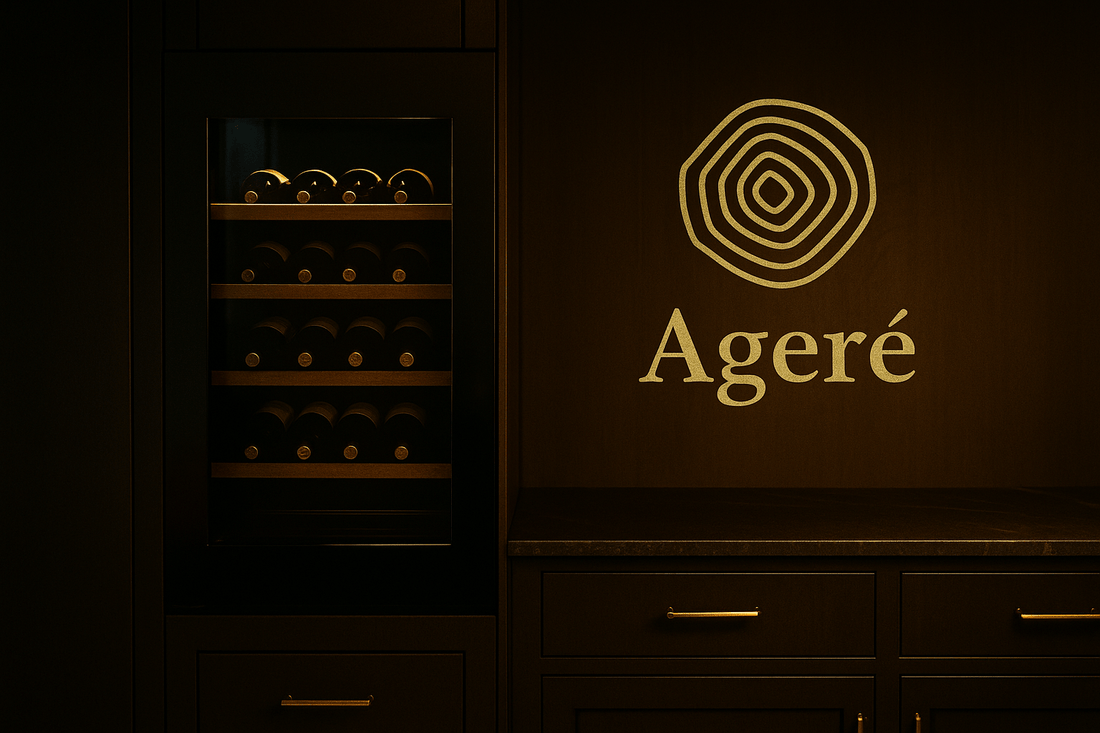
How to Store Wine at Home: A Guide to Temperature, Humidity, and Design
Whether you're a seasoned collector or a casual enthusiast, proper wine storage is essential for preserving the quality, flavor, and longevity of your bottles. In this guide, we explore how to store wine at home — from ideal temperature and humidity to choosing the right wine fridge and designing a space that enhances both function and aesthetics.
Why Proper Wine Storage Matters
Wine is a living product. It evolves in the bottle, and how you store it can either enhance or destroy its character. Poor conditions — like temperature swings, excess light, or dry air — can cause oxidation, spoilage, or premature aging. Even short-term mistakes can compromise the subtle aromas and balance that make a wine special.
1. The Ideal Wine Storage Temperature
Temperature is the most critical factor when storing wine. Here’s what you need to know:
- Ideal range: 10–14°C (50–57°F)
- Consistency is key: Avoid temperature fluctuations, which can cause the wine to expand and contract, damaging the cork and letting air in.
- Red vs white: While serving temperatures vary, storage temperature is generally the same for both reds and whites.
Tip: Storing wine too warm can accelerate aging and flatten the flavor. Too cold, and you risk freezing or slowing natural development.
2. Humidity: Keeping the Cork in Check
Humidity plays a crucial role in keeping corks moist and preventing them from shrinking or drying out — which could let in oxygen and ruin the wine.
- Optimal humidity: 60–75%
- Too dry: Corks dry out and shrink, compromising the seal.
- Too humid: Mold growth can occur — on labels, corks, or cabinetry.
Most quality wine fridges, like those in the Ageré Preserve Collection, include humidity control features to maintain ideal balance without manual intervention.
3. Light and Vibration: The Silent Enemies
Wine hates light. Ultraviolet rays (UV) can degrade and prematurely age wine, especially whites and champagnes. That’s why many wine bottles are dark green or amber.
Vibration is another hidden enemy. It disturbs sediment, accelerates chemical reactions, and can negatively affect long-term aging.
- Light: Store wine away from windows and direct sunlight. Use fridges with UV-protective glass doors.
- Vibration: Avoid placing wine near heavy appliances, HVAC units, or unstable surfaces.
4. Horizontal Storage: Why It Still Matters
Wine bottles sealed with natural cork should always be stored horizontally. This keeps the cork moist and swollen, maintaining an airtight seal. For wines with screw caps or synthetic corks, horizontal storage is less critical — but still helps maximize space and organization.
5. Choosing the Right Wine Fridge
If you don’t have a traditional cellar, a modern wine fridge offers a reliable, stylish solution. Here’s what to consider:
Single-Zone vs Dual-Zone
- Single-zone: Best for collectors who store mostly one type of wine or age everything at the same temperature.
- Dual-zone: Ideal if you want to serve whites and reds at different temps while still storing both in one unit.
Capacity and Flexibility
- Make sure it fits your current collection — and your future growth. Units like The Cellar Quartet hold over 300 bottles and offer dual-use zones for beverages too.
- Look for adjustable shelving and vibration-dampened interiors.
Design and Integration
- Choose a model that fits your aesthetic — whether built into cabinetry or freestanding.
- The Grand Reserve offers seamless black glass styling with soft LED lighting for a modern wine room or luxury kitchen.
6. Creating a Wine Space at Home
Storage isn’t just about preservation — it’s about presentation. Consider carving out a dedicated wine area in your home:
- Wine wall: Pair wine fridges with custom shelving and lighting for a showpiece display.
- Cabinet integration: Built-in wine fridges offer a clean look that blends into kitchens, dining rooms, or bar areas.
- Freestanding corner: Even a small unit like The Host’s Companion can elevate a space when styled with glassware, books, or art.
Lighting, materials, and context matter — and a well-designed wine zone adds value to both your home and your lifestyle.
7. Mistakes to Avoid When Storing Wine
- Storing in the kitchen or near heat sources
- Keeping bottles upright (for cork-sealed wines)
- Using a regular fridge — it’s too cold and dry
- Storing near vibrations or sunlight
Even occasional drinkers benefit from proper wine care. With the right storage, you preserve quality and enjoy your bottles at their best.
Conclusion: Good Wine Deserves Good Storage
Storing wine properly doesn’t require a cellar — just the right tools and awareness. Temperature, humidity, light, and vibration all play a role. A well-made wine fridge with thoughtful design, like those in the Ageré Preserve Collection, offers both performance and beauty for modern living spaces.
Because a great bottle deserves more than just shelf space — it deserves a setting that respects what’s inside.
